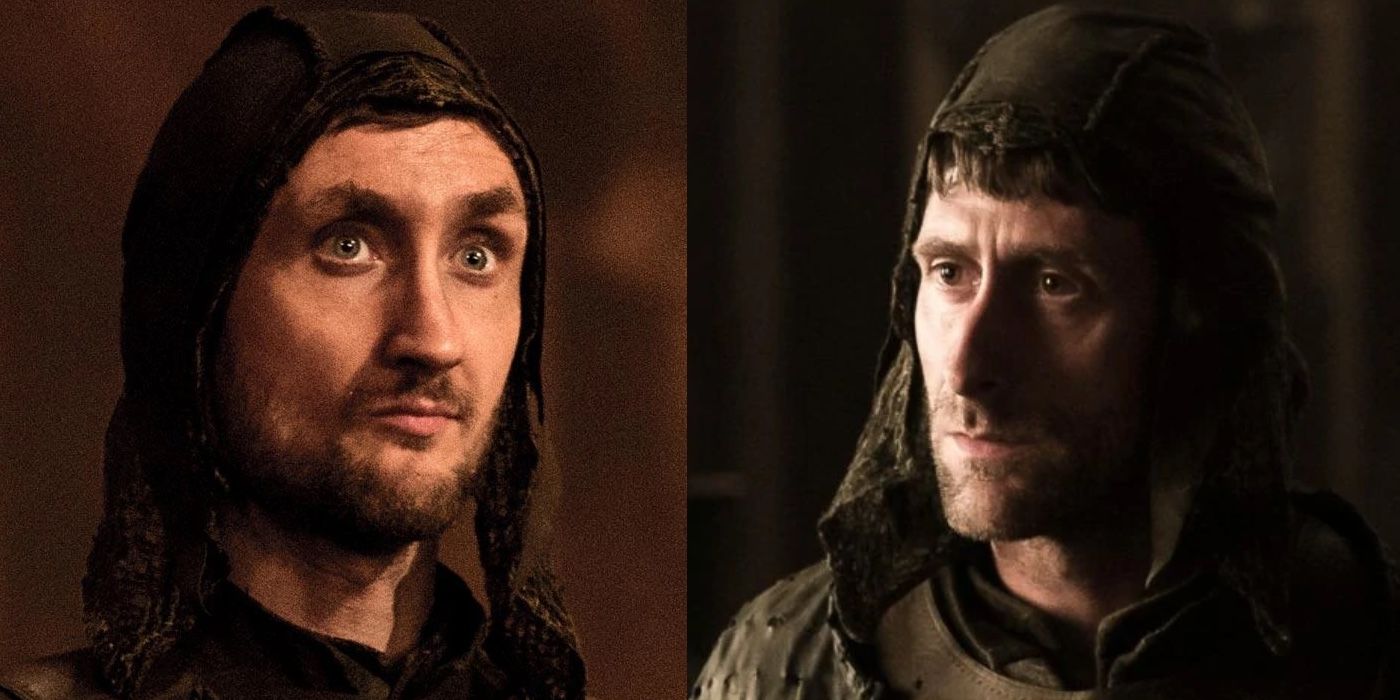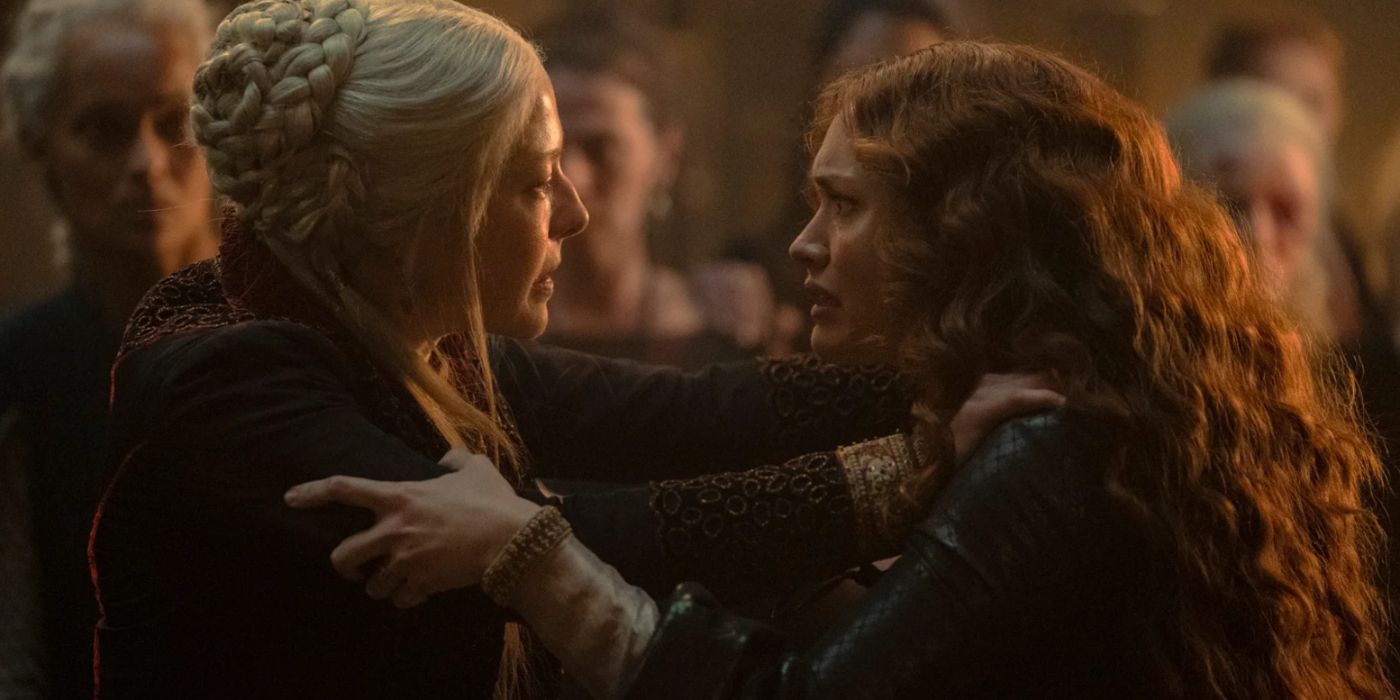
Contents
7.Rickard Karstark
Steve Blount Was Replaced With John Stahl
When Rickard Karstark was first introduced in season 1, the character had a fairly minor role compared to what was to come when Robb Stark assumed leadership as King of the North. In the Game of Thrones season 1 finale when Rickard Karstark is the second to name Robb king, with actor Steve Blount playing the role.
When the character returned for season 2, Richard Karstark was played by actor John Stahl, who maintained the role until his final on-screen appearance in season 3. Since Karstark’s character would be expanded and serve as a core supporter and critic of Robb Stark, Game of Thrones likely wanted a more established and versatile actor in the role that contributed to Robb Stark’s downfall.
8.Lothar Frey
Tom Brooke Was Replaced With Daniel Tuite
While Lord Walder Frey had too many children to remember, the one son who had a semi-present role in Game of Thrones was Lothar Frey. The character was introduced in season 3, where he played an integral role in planning the shockingly brutal Red Wedding, which would end in the murders of Robb, Catelyn, and Talissa Stark. In his two-episode arc in season 3, Lothar was portrayed by Tom Brooke.
After being absent for seasons 4 and 5, the Freys reappeared in Game of Thrones season 6 to fight alongside Jaime and make the Blackfish surrender. During these episodes, Lothar is portrayed by Daniel Tuite. It’s unclear why Lothar was recast, but the two-season hiatus of the character likely meant Brooke was unavailable. Lothar’s final appearance was in season 6 unless counting the pie he was baked into for season 7 when Arya killed all the Frey men and left House Frey nearly extinct.
9.Dickon Tarly
Freddie Stroma Was Replaced With Tom Hopper
The favored younger brother of the lovable Samwell, Dickon Tarly was first seen in Game of Thrones season 6 when Sam returned to Horn Hill on his way to the Citadel. Dickon is portrayed by Freddie Stroma (Vigilante in Peacemaker) during the episode in which he eats dinner and chats with Sam and Gilly and isn’t seen again until season 7 where he’s played by The Umbrella Academy actor Tom Hopper.
Stroma was originally supposed to reprise his role as Dickon, but scheduling conflicts with Time After Time got in the way, leading Hopper to play the character when executed by Daenerys.

10.Myrcella Baratheon
Aimee Richardson Was Replaced With Nell Tiger Free
Although her family plays one of the largest roles in the series, Myrcella Baratheon plays the smallest part in the Baratheon/Lannister family. Cersei’s (and Jaime’s) daughter Myrcella Baratheon was largely a background character in seasons 1 and 2 of Game of Thrones. She was played by child actress Aimee Richardson when first sent to Dorne by Tyrion Lannister.
Myrcella doesn’t return until Game of Thrones season 5, where she is now a teenager and has clearly fallen in love with her fiancé Trystane Martell. For Myrcella’s final four episodes in seasons 5 and 6, the character was portrayed by actress Nell Tiger Free. An official reason for the recast was never given, but Richardson apparently found out she wouldn’t be returning alongside fans during the San Diego Comic-Con. Since Myrcella’s role was expanded with a lot more emotional tension and drama, Game of Thrones likely wanted an actress who could bring more nuance to the long-removed princess.
11.Tommen Baratheon
Callum Wharry Was Replaced With Dean-Charles Chapman
Like Myrcella, Tommen Baratheon was also recast in season 4 when the role was expanded and required more experience. Tommen was portrayed by Callum Wharry in Game of Thrones seasons 1 and 2 as a young child who was primarily a background character. It’s not clear why Tommen was absent during season 3, but when he returned in season 4 as the new king after his brother Joffrey Baratheon’s death, he was played by the more mature Dean-Charles Chapman.
Game of Thrones writer Bryan Cogman revealed on the Game of Owns podcast that Tommen was recast because he was going to be king, meaning more heavy and intensive acting for the character required an experienced actor. His reign as king turned out to be short as Tommen killed himself in Game of Thrones season 6. Similar to the Night King’s recasting, Chapman had previously worked on the series when portraying Tommen’s murdered cousin Martyn Lannister in season 2.
12.Selyse Baratheon
Sarah Mac Keever Was Replaced With Tara Fitzgerald
Whether Stannis’s wife and young Shireen Baratheon’s mother Selyse was truly recast or not is up for debate since the first actress was uncredited, but it seems likely it was the case of a place-holder casting. When Stannis’s family is first introduced during season 2, Stannis extends his hand to a woman who stands next to him at the funeral pyre, suggesting it’s his wife Selyse.
The uncredited role was played by Sarah Mac Keever, but when Selyse Baratheon returned as an expanded and more intensive character in season 3, experienced actress Tara Fitzgerald took over as the queen. The reasoning seems to follow that Game of Thrones wasn’t ready to hire an actress for such a minor role in season 2, so they waited until Selyse was a full-blown character to cast a permanent actress in season 3.
Some Recastings Completely Changed The Characters’ Appearance
Many of Game of Thrones recasts aren’t massively noticeable, especially those where placeholder actors initially stood in for the role such as the uncredited Selyse Baratheon actress changing in season 2. Sarah Mac Keever, the series 2 Selyse stand-in, and Sarah Mac Keever aren’t identical but look similar enough for the switch to go unnoticed by most. Some, though, are incredibly jarring and off-putting to fans and even casual viewers.
Daario Naharis’ Michiel Huisman replacing Ed Skrein or the Three-Eyed Raven actor changing from Struan Rodger to Max von Sydow, created huge aesthetic continuity issues. Skrein’s Daario Naharis looks nothing like Huisman’s Daario and no attempts were made to make it appear as their these two were the same people with Huisman even growing a beard for the role. Both versions of Daario look and even act like distinctly separate characters.
The Three Eye Raven’s vastly altered appearance between seasons 4 and 6 goes a step further. Not only are Rodger and von Sydow not that similar in real life, but an excessive retooling of the character’s prosthetic effects for von Sydow also made the change too hard to ignore, so much so that it became one of the many criticisms of Game of Thrones overall. The first Three-Eyed Raven, Struan Rodger, had completely black eyes, long wispy hair, and leathery skin. He genuinely looked like a cross between Gandalf and Gollum.
When the character returned in season 6 as Von Sydow is was drastically altered with the look simplified. It wasn’t even just that the hair and beard were gone — whereas his protégé Leaf had leaned into her fey-inspired roots, von Sydow’s Raven looked indistinguishable from any of the older members of the Night’s Watch. Hopefully, the Game of Thrones prequel House of the Dragon manages to switch out actors and actresses more deftly if it needs to.

House Of The Dragon’s Deliberate Recasts Explained
The Game of Thrones prequel series House of the Dragon cast saw a huge amount of recasts over season 1 — however, these were necessary for narrative purposes. House of the Dragon season 1 basically sets up the entire tale for the Targaryen Civil War, known as the Dance of the Dragons. The purpose of the whole season is to lay out all the events which set in motion the major war, and establish the factions of the Greens and the Blacks, and how they came to each separate cause.
The two big recasts were that of Rhaenyra Targaryen, which initially saw Milly Alcock for the first 5 episodes then Emma D’arcy for the remaining 5, and Alicent Hightower, who was first played by Emily Carey and then Olivia Cooke. This was done to represent the passage of time, which sees the beginning of the series with Rhaenyra around 15 and in her 30s by the end of season 1. The same was done for all of the children in House of the Dragon. Since the timeline for season 1 spans about 20 years, these Game of Thrones recasts were entirely necessary.
All of the Velaryon and Targaryen children are recast at some point, with the biggest time jump occurring between episodes 5 and 6. HotD saw different Aegons, Aemonds, and Helenas, as well as different Jaces, Lucerys, Laenas, and Rhaenors. Pretty much the only characters who weren’t recast were Daemon Targaryen, Viserys Targaryen, Rhaenys Velaryon, and Corlys Velaryon. While the House of the Dragon recasts were confusing at first, they were at least integral to the series, unlike Game of Thrones.
Are There More House Of The Dragon Recasts Coming?
Season 1 of House of the Dragon outdid any of the Game of Thrones cast changes as some of the most significant characters of the series had new actors in the role. It was a risky move to do just as the audience was settling into the story and these new characters and it likely caused fans to wonder if they can expect more recasting as the series goes on. Luckily, the showrunners of House of the Dragon addressed those concerns going forward.
Ryan Condal confirmed (via TV Line) that House of the Dragon season 2 would not feature any time jumps and that the cast would remain as it was. He explained “The actors are playing these characters until the end. We’re not recasting anybody.” He went on to explain that the groundwork laid in season 1 with the younger years of these characters was necessary, but with the story in full wing, “We are now in the Dance of the Dragons, and we’re going to tell that story.”
While it is reassuring that the plan is to keep the cast that is on the show now, Condal obviously cannot say for a certainty that there will be no more recasting. Certainly, the Game of Thrones cast changes were not planned and House of the Dragon could encounter these same unforeseeable circumstances, from minor characters suddenly becoming important to actors becoming unavailable to return. However, the Game of Thrones cast changes didn’t affect the show too negatively so House of the Dragon should be fine if it is able to maintain its core cast.








